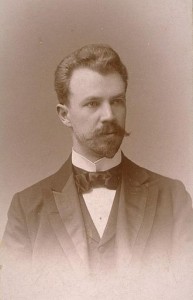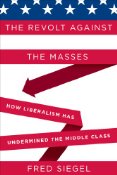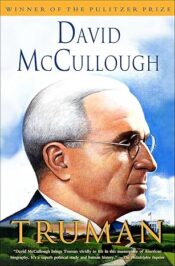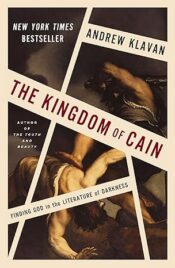
The Revolt Against the Masses How Liberalism Has undermined the Middle Class By Fred Siegel
The Revolt Against the Masses
How Liberalism Has Undermined the Middle Class
By
Fred Siegel
Liberalism Unmasked could be an alternative title for Fred Siegel’s book. Siegel strips away the myth of benevolence cultivated by the left and exposes the egotism, snobbery, resentment and power seeking that are the constants of American liberalism. Siegel’s thesis is that Barack Obama’s liberalism is not rooted in Wilson progressivism or the New Deal but in post World War I intellectuals’ disdain for America. The author cuts the moral high ground from under the well-shod feet of contemporary liberals and their antecedents in the 1920s.
“It was in the seminal 1920s that the strong strain of snobbery, so pervasive among today’s gentry liberals, first defined the then nascent ideology of liberalism.â€
The 1920s liberals had “a quarrel with the industry, immigration, and economic growth that produced unprecedented prosperity in the United States. They recoiled at what they saw as the ugly bustling cacophony of the urban masses loudly staking their claim to capitalism’s bounty.â€
Siegel quotes from Herbert Croly, Randolph Bourne, H.G. Wells, Sinclair Lewis, H. L. Mencken and others. This aristocracy of talent and taste – as they perceived themselves – rejected the new realities of industrial and commercial society. They thought themselves smarter than other people and disdained the “provincial†values of the middle class. H.G. Wells gleefully described one of his books as “designed to undermine and destroy…. monogamy, faith in God and respectability…
This reviewer believes that if Mencken looked at America today – at the 40.7% of births to unmarried mothers; the mostly successful drive to eject religion from the public square; and a culture that vacillates between the merely crude and the pornographic–he might declare victory.
Siegel singled out Herbert Croly, editor and co-founder of The New Republic, and writer Randolph Bourne as crafting the assumptions and quirks that make up the founding ideology of liberalism. The liberals’ 1920s vision of a secular ruling class that would Europeanize America finds expression today in the egotism of Barack Obama and the Common Core machinations of Arne Duncan.
‘To achieve a better future,’ Croly argued, ‘Americans had to be “emancipate[d] from their past.’ He rejected American tradition, with its faith in the Constitution and its politics of parties and courts, and argued for rebuilding America’s foundation on higher spiritual and political principles that would transcend traditional ideas of democracy and self-government. Like Wells, Croly called for centralized power that might be, he acknowledged, ‘injurious to certain aspects of traditional American democracy.’ But this was no great loss, because ’the average American individual is morally and intellectually inadequate to serious and consistent conceptions of his responsibilities as a democrat.’
Progressives, furious with Wilson for entering the war he’d promised to keep America out of, and scornful of American society, reconstituted themselves as liberals.
Between January 1920 and July 1922 when the 20s began to roar, the country endured an economic collapse nearly as severe as that between 1929 and 1933. But the plummet was followed by a rapid recovery under [President] Harding, who was devoted to less government and lower taxes and less regulation. This might have seemed a vindication of the American way, particularly as compared with Europe’s ongoing woes. But the short, sharp downturn, resolved without government intervention, drew only passing intellectual attention. Literary elites soon returned to their central themes.
The elites were resentful. They felt their exceptional intelligence and talents were under-appreciated in the American business culture.
They were angry at what they viewed as the mediocrity of democratic life and used the now all too familiar ploy of blaming society for their personal failings.
As New Republic editor Waldo Frank explained: “We were all sworn foes of capitalism, not because we knew it would not work, but because we judge it, even in success, to be lethal to the human spirit.”
The American Communist Party was quick to turn these resentments into political capital for the Communist cause. Their vehicle was the Sacco-Vanzetti case: Two Italian-American anarchists convicted of murder during a payroll holdup and sentenced to death. Proof of guilt was irrelevant to liberals who made opposing the verdict a new crusade against America’s many shortcomings.
As Siegel writes, the case had profound consequences: “Emotionally and politically it was the determining factor that led many liberals to swing toward Communism after the 1929 crash.†The liberals embraced this alternative to the American Dream and their new allies in the war against American democracy. Now the same people they once described as “Philistine hordes†were redeemed, becoming “suffering supplicants suitable for molding by their betters.â€
 Lincoln Steffens, the most influential liberal journalist of the era, praised the Bolsheviks without restraint. It was Steffens who famously wrote, “I’ve been over into the future, and it works.â€
Lincoln Steffens, the most influential liberal journalist of the era, praised the Bolsheviks without restraint. It was Steffens who famously wrote, “I’ve been over into the future, and it works.â€
Steffens and company did not question the inflated claims of Soviet productivity or the human costs. Planning was the new liberal mantra. The enemy, as always, was capitalism and the American middle-class. They differed about strategies for bringing about nirvana but they were united in “the belief that they possessed a priestly knowledge – which entitled them, as it had the Bolsheviks, to govern the degraded masses.†Wells said of Stalin: “He owes his position to the fact that no one is afraid of him and everyone trusts him.”
The reality was that the Ukrainian terror famine produced by Stalin’s collectivization of agriculture killed millions of people in 1932 in 1933. The abolition of private farming enforced by the Soviet secret police turned the breadbasket of Europe into a charnel house. Had the reality of Soviet mass murder been widely reported in the West, it might have had an impact on the leftward leap of American political opinion.
American liberals accepted the faux reality presented by the New York Times and other liberal organs and promoted the contrived fear of a right-wing takeover at home. Liberal writers warned of American fascism driven by middle class conformity and orchestrated by big business. It was a “game of political misdirection that succeeded brilliantly.†And it’s a contrivance familiar to this reviewer and, no doubt, to many readers of this blog.
When confronted with the realities of Soviet barbarism, liberal strategy at the time was either to deny the facts or “to change the subject to a grievance, such as the imagined innocence of Sacco and Vanzetti or the genuine plight of miners toiling long hours for short wages. “
The new deal of the late 1930s unavoidably drew on the same circle of professors and professionals enamored of Moscow. We know from the unimpeachable Verona transcripts (intercepts of radio communications between the American Communist Party and the Kremlin) that by the late 1930s, there were Soviet sympathizers honeycombed throughout the federal government. But it was only after World War II that the ties between New Dealers, fellow travelers, and Soviet spies became political and emotional tender.Â
At the apogee of their influence, the liberals, rebranded as Progressives, used their influence in government, Hollywood, the press, and the academy to do exactly what they had rightly criticized Woodrow Wilson for doing. Just as Wilson had tried to shut down criticism of America’s involvement in World War I and its wartime conduct, the Progressives, smitten with their newfound power, cast critics of the Soviet Union on both left and right as fascist sympathizers.
Siegel tracks the transmission of 1920s liberalism.
The ideals of the 1920s liberals were, by way of the statist and technocratic elements of the 1930s, carried forward into the 1960s. It was in the 1960s that liberals, even more than conservatives, laid siege to the social-solidarity heritage of the New Deal. In the name of good causes such as opposition to racism and the war in Vietnam, post-New Deal upper-middle-class liberals looked to remake America in their own image by enhancing their own power. They defined middle-class Americans, including those who made it into modest prosperity through unionized work, as the unenlightened objects of their enmity…
As to the supposed New Left of 1960s, Siegel finds little about it that was new.
The old leftists illusions about the USSR were replaced by new delusions about Third World dictators such as Castro, Nkrumah, and Nasser. The underlying utopian tropes of the old left where refurbished not replaced. Utopian fantasies about eliminating private property were supplemented with utopian fantasies about free love and polymorphic perversity.
The universities were the center of radicalism then as they are today.
In the Academy, which produced more graduate students between 1965 in 1975 then it had in the previous 65 years, a cultural Marxism took hold that has yet to surrender its grip.
Liberal interests never reexamined their assumptions, even when faced with social and political failure. They never asked why, despite the vast sums expended, poverty had become worse rather than better. Instead, they pointed to shards of success and more significantly, in the hopes of maintaining their grip, redefined the problem. Great Society social programs originally designed to reduce if not eliminate poverty where now justified in terms of rights, racial justice, or diversity. And then there was fallback to the fallback: the insistence on good intentions rather than outcomes.
Siegel traces the convolutions of liberalism through the 1920s, the red tinged 30s, the New Deal, the Great Society, the turbulent 1960s, the eruptions of environmentalism and feminism in the 1970s to Barack Obama. The one commonality that emerges is the liberal/progressive commitment to superiority and self-advancement.
Liberal social programs to combat poverty and reform the schools, their failures now long institutionalized, have produced a government whose grasp far exceeds its competence and whose costs are carried by the private-sector middle class. Like corrupt Harlem Congressman Charlie Rangel, who did his best to keep new businesses out of Harlem so that he could fend off rivals and accumulate anti-poverty money for his political friends and allies, liberalism has been dedicated to preserving the problems for which it presents itself as the solution.
Barack Obama put together a coalition consisting of the usual leftist academics, well-heeled liberals, professional blacks, Hispanics, and sexual deviants, all backed by taxpayer supported public-sector unions and the Democratic Alliance with its billionaire membership.
The very idea of politics, the need to accommodate competing but  legitimate interests, seemed alien to the Democratic Alliance, whose members were sure that their business expertise, generously donated to the public, could make America once again acceptable in their own eyes.
The Alliance founded by George Soros and Peter Lewis among others, rejected their old role as deep pockets for politicians schemes and instead believed: “Politicians should serve as the vehicle for their brilliant ideas. “
The new configuration was united by its disdain for people aspiring to achieve or hold on to a private-sector middle-class life, people who didn’t shop at farmers markets or know the difference between rice or risotto.
Obama’s 2008 campaign promised post-partisanship and he is the most partisan president in the nation’s history. He represented the new American elite and he talked a good line. For many he represented “a break with America’s racist past†and they could feel virtuous voting for him. Never mind his lack of a paper trail or achievements. A well functioning press would have asked questions. But as Siegel points out, Obama’s racial and political authenticity gave him a cloak of invulnerability that he wears to this day.
One of the ironies of 2012 was that the one time liberal bugaboo of the mass media played such a crucial role in reelecting the liberal candidate. A press that was even semi-sentient might have acknowledged the problematic quality of the auto bailout. But the scandal of the Solyndra and other so-called green companies and the slumping share price for General (dubbed “Governmentâ€) Motors received scant attention. Instead, the ineffective auto bailout became one of the keys to Obama’s narrow but crucial 2012 victories in Great Lakes auto states such as Ohio and Wisconsin. In 2012, the clerisy – composed of the mass media, Hollywood on academia and the press was virtually united in their determination to push the incumbent over the top.
Siegel does not parse words when condemning what amounts to a conspiracy of silence aided by tax-supported special interests and self-absorbed billionaires. Although this reviewer wishes he had written more about the billionaires and how their plans for America intersect with the current administration. But that is probably a subject for another book.
In fairness, Siegel’s is not a complete account of the history of liberalism, and he does not claim that it is. It is one strain, albeit a consistent and now a dominant one. These are bitter truths for Siegel whose roots are in the values that the left still claims to represent: opposition to injustice and concern for capitalism’s casualties. As the subtitle suggests, liberals, or progressives as they again identify themselves, began by undermining those values and do so today, with a vengeance.
At the end of the book, Siegel sums up the results:
… Over decades, the liberal experts directed the dispersal of trillions of taxpayer dollars to alleviate poverty and improve education – it was the price, they said, that we needed to pay to advance equality. The money flowed, in nearly inconceivable quantities, but the poverty rate today is roughly where it was 30 years ago, and the schools are still mired in failure as academic standards fall prey to collapsing cultural conventions…
As a matter of policy, liberalism has been a very expensive failure. As a matter of patronage, against which it once rebelled, it has been a considerable success. The founding 1920s liberal hope for a society ruled by an aristocracy of talent has been replaced over time by a concatenation of crony capitalism, credentialism, and contraception. The third, contraception (the promise of sexual liberation being associated with liberalism from the start), has, however, failed to deliver on the one shining promise of creativity corked up only by sexual restraint.
Fred Siegel has written a unique and informative book that should be widely read, especially by those who share Siegel’s dismay, and wonder what went so very wrong. He exposes the egoism and will to power that animated progressives-turned-liberals in the 1920s and motivates liberals-turned-progressives today. He does so, not by hectoring, but with the humor and irony his subject requires.

 The posts are coming!
The posts are coming!


1 comment
Marcia – Based on your review, I’ve added this to my list of books to read. Thanks!
[Reply]
Leave a Comment